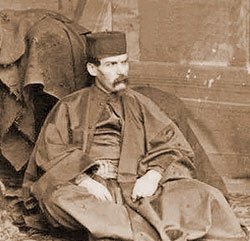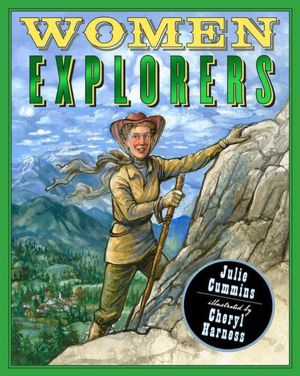It’s not surprising that as a
writer of nonfiction, I also enjoy watching documentaries. I don’t mean the
cinema verite variety one often sees on You Tube, where folks perform
narcissistic show and tell alls. I’m talking about videos and films that have a
story with a beginning middle and an end. They are well researched,
entertaining, and present a consistent
point of view. Sometimes heartbreaking, sometimes funny, these documentaries
are always thought provoking and believable. With non-fiction books, the same
qualities are necessary. But as much as these two art forms – a documentary
film and a nonfiction book- have in common, there are major differences.
I decided to sit down with my
friend, Jill Evans Petzall, an Emmy award-winning documentary film maker, and
explore these similarities and differences. Here is the edited text of our
conversation at lunch one day, accompanied by lobster salad and glasses of
Chardonnay.
Jan: How did you get into making documentaries?
Jill: It happened by accident. I
was raising three children and working on a Ph.D. in Philosophy. I didn’t watch
T.V. and I limited their screen time. But I always loved working with language
and images and exploring the relationship between the two.
Jan: I remember growing up that you were the artist and I was the
writer …but you also wrote poetry. Your husband, Claude, calls you
“relentlessly creative”.
Jill: (laughs) Around this same
time I decided I didn’t want to be a fulltime academic, which is what a Ph. D
means. I was having an exhibit of my
photographs at a gallery. Someone from ABC-Hearst saw it and approached me
about doing a video project. This was 1982 and cable television had just burst
on the scene.. He’d been commissioned to do inserts of programming, ten pilots
of two minute FYI segments on women’s issues. ‘I don’t watch T.V,’ I told him.
‘I don’t know the first thing about it.’
‘I’ll help you,’ he said.
I had already decided to not to pursue
the Ph.D, so the timing was right. I didn’t know a thing about film and video
production, but because the technologies were so new, I could grow along with
them. What I needed, I had. I could write well and see photographically.
Jan: You also had content to draw on, as you read extensively and look
at things philosophically.
Jill: Another coincidence
happened. My boss from ABC-Hearst ran into local St, Louis newscaster Karen
Foss and asked her to be the anchor (on-air-talent) for our short programs. At that moment she was on a hiatus
from anchoring her news show at the NBC affiliate. She looked at my scripts,
loved them, and said yes.
At the same time Channel 9
public television was putting together a TV magazine. TV abounds with programs
like this now, but at the time this was unusual, especially for public
programming. They asked Karen to do five pilots on St. Louis artists over 5
months. She asked to bring me along. Karen would meet me early in the mornings
at the TV station and teach me how to edit and essentially how it all worked.
Jan: Karen sounds like a wonderful mentor. What were some of the things
she taught you?
Jill: For example, I learned
about putting a story in a limited time frame in five to eight minute segments;
here’s where story-telling in the media differs from story telling in print.
Media story-telling occupies given amounts of time in the same way that print story-telling occupies a given number
of pages of text. That’s why it’s sometimes called ‘real-time media’. So when you are given 1500 words for a
story, in my field, I need to contain my story to a limited amount of minutes,
which comes downs to frames per second on-screen.
And when someone is speaking on
screen, you can’t speed-rush the time they take to say what they mean. If you
were quoting them, either you can condense or paraphrase their words; in real-time
media, you must electronically edit their sound bite and still do justice to
their thoughts, their cadences, and word choices. Then you need to find other,
related images to visually ‘cover’ where you spliced together what they said,
or else it looks strange on TV. It’s always about the relationships between the
sound and the image, the meanings in the words and the messages in the pictures
– and how these inform one another
Jan: What do you think are some other differences between writing
non-fiction and making a documentary film?
Jill: “In writing you can make
magic happen anytime, if you write with authenticity, A writer crafts the words
and the reader understands this. But in video, the viewer expects a carbon copy
of reality. Some of this is an illusion as people forget about editing,
(especially if the editing is done well), and when it is, people forget that
the film maker has a distinct point of view. Even in a documentary film, the
filmmaker is still creating an artificial world out of real sounds and images
from the real world. The filmmaker selects what to shoot, what to ask, what to
include in the final and what to leave on the cutting-room floor. The
documentary ‘reality’ part is still an illusion of condensing time by framing
the image and editing the moments. Ideally, it should all feel like a
motivated, dramatic necessity. But this is always the filmmaker’s vision.
·
Jan: Like
writing nonfiction, the film maker chooses the important anecdotes. Tell me
about “When the Bough Breaks: Children of Mothers in Prison,” which won an Emmy
and is now part of permanent collections in libraries all over the country,
used in schools and film workshop. It is the story of women in prison and the
children they leave behind. You asked the controversial question, "Should
nonviolent, female offenders be kept in prison? I know you did years of
research.
Jill: It took four years to
complete the documentary. By the time I began to interview people on tape, I
went in with a list of questions that had been carefully put together after two
years of off-camera interviews and tons of other research.
Sometimes it takes a long time
to get to the defining anecdote. In writing an essay, you can use back notes.
Not in film. It needs to be spoken by the character while the camera is rolling
and the mike is pointed in the right direction.
Jan: In a book, you use language, words on the page, to describe
emotions. Vocal inflections and gestures need to be described through dialogue,
action and sensory language.
Jill: The good news is that you
can catch facial expressions visually, but, unlike writing text on a page,
you can’t control your character’s
vocal inflections. So it has to be a soundbite that takes its own time. Then
this footage has to be edited down into a coherent scene, visuals and all, not
just talking heads. And when the audience is watching, the story needs to have
given them everything they need to know to arrive at that anecdote in the
documentary. Because they can’t go back through pages of a book to recall the
character’s name, they have to remember who is speaking and why it’s important
just then.
Jan: But like in a nonfiction book, you have to build suspense and
provide an element of surprise.
Jill: For months & months
before, I hung out with the families and monthly went to the prison to see the
Moms. Before I interviewed the kids, I needed both them and their caretakers
(foster parents, real fathers, step moms) to trust me. I wanted to be constant,
ordinary person - who was also special to them. For factual research, I mostly
talked to the Moms and Dads – or foster parents or other kin - about the
children. If I hear too much from the kids themselves before I ask them
questions on film, then their answers when the camera is rolling get stale. No
one tells their own story to the same person the same way twice. So I wait to
ask kids the important questions for the filming. Kids and especially their
mothers are not used to be taken seriously but the filmmaking setting makes
them feel more important. I wanted them to feel surprised about how well they
did. They got to learn this when they finally saw the edited documentary.
Jan:
As a writer, videographer, and
video artist, who has been vitally interested in women’s issues throughout your
career, can you share what you think is the most important message, you can
give to your audience?
Jill: It seems we are all
imprisoned by expectations we have learned over the years of watching
television and dramatic fiction films. The mass media in our everyday world has
become the dominant story-teller around the globe. Electronic technologies
stretch across barriers of language, class, race, and literacy. And then, media
stories are absorbed into our real-life relationships. We believe that the authority of TV
brings us what is. But I think it mostly teaches us to want what is considered
sexy at the moment.
Usually, we are trapped into
expecting stories about heroes, about men, about men who do or do not romance a
woman; about women whose happiness depends on being chosen for romance by the
man. Mostly we are taught to expect men who are strong and women who are needy;
men who are providers and women who need to be saved. Everyone is taught to
prize the dramatic tensions that please white men and make white men look good.
So how easily what we are taught to want on TV is real-life distortion, what
seems spectacular but without artistic surprises.
Yet, sometimes there are dramas
where women challenge those norms. Here’s where we can see what might be, not
what is. This is when the audience can be given important surprises, as Monk
would say. For outside of the art of story telling (whether in music or fiction
or documentary), in real everyday life, the lives lived outside our peripheral
awareness are never so simple, with easy-to-recognize good guys and bad
guys.
We live in a real world where
people cope in all kinds of ways, but most of their realities aren’t marketed
as being plot-worthy for prime-time.
And sadly, mostly these realities are lived by women whose voices are not
heard, who are not beautiful, nor sexy, nor stereotypically empowered. Still
they have important things we can learn – about worlds that surprise us, and
about making our culture into a more empathic, fair-minded society. These are
the stories I like to find, to tell, and to show in real time.
Here is a link to learn more
about Jill’s work.



















